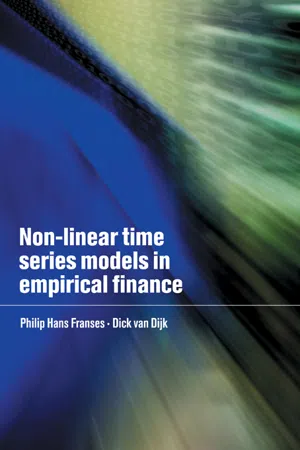
- English
- PDF
- Available on iOS & Android
Non-Linear Time Series Models in Empirical Finance
About this book
Although many of the models commonly used in empirical finance are linear, the nature of financial data suggests that non-linear models are more appropriate for forecasting and accurately describing returns and volatility. The enormous number of non-linear time series models appropriate for modeling and forecasting economic time series models makes choosing the best model for a particular application daunting. This classroom-tested advanced undergraduate and graduate textbook, first published in 2000, provides a rigorous treatment of recently developed non-linear models, including regime-switching and artificial neural networks. The focus is on the potential applicability for describing and forecasting financial asset returns and their associated volatility. The models are analysed in detail and are not treated as 'black boxes'. Illustrated using a wide range of financial data, drawn from sources including the financial markets of Tokyo, London and Frankfurt.
Frequently asked questions
- Essential is ideal for learners and professionals who enjoy exploring a wide range of subjects. Access the Essential Library with 800,000+ trusted titles and best-sellers across business, personal growth, and the humanities. Includes unlimited reading time and Standard Read Aloud voice.
- Complete: Perfect for advanced learners and researchers needing full, unrestricted access. Unlock 1.4M+ books across hundreds of subjects, including academic and specialized titles. The Complete Plan also includes advanced features like Premium Read Aloud and Research Assistant.
Please note we cannot support devices running on iOS 13 and Android 7 or earlier. Learn more about using the app.
Information
Table of contents
- Cover
- Half-title
- Title
- Copyright
- Dedication
- Contents
- Figures
- Tables
- Preface
- 1 Introduction
- 2 Some concepts in time series analysis
- 3 Regime-switching models for returns
- 4 Regime-switching models for volatility
- 5 Artificial neural networks for returns
- 6 Conclusions
- Bibliography
- Author index
- Subject index